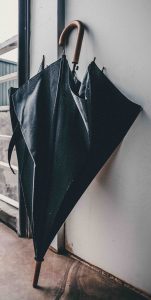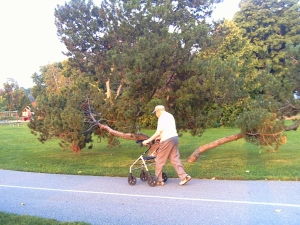Falls are a serious problem in California nursing homes and can have serious health consequences for elderly residents. The attorneys at the Walton Law Firm know that a nursing home with 100 beds will have approximately 200 falls a year, many of which will go unreported. Nursing facilities should prevent falls for their residents whenever possible. Serious falls in custodial settings can result in death or drastically alter the quality of living for California seniors.

To prevent falls, nursing home residents should be evaluated for their fall risk when they are admitted, and that assessment should be updated as a resident’s condition changes. Caretakers should consider a resident’s medical conditions and other possible risk factors, such as a resident’s overall mobility or access to fall prevention devices such as bed or tab alarms.
According to a report at Petaluma360.com, a Petaluma woman has filed a California nursing home abuse lawsuit, alleging that her 80-year-old mother suffered from malnutrition, dehydration, and infection that resulted in hospitalization due to nursing home negligence, neglect, and misrepresentation. The woman claims that her mother sustained several injuries, including a broken hip, while receiving home care from Accentcare Home Health of California, Inc.
Nursing home falls can occur for a number of reasons such as inadequate fall risk assessment upon admission, inadequate staffing, and/or inadequate supervision. The Petaluma lawsuit alleges that the senior fell while at home because home health care workers left her unattended even though they knew she suffered from dementia and was at risk for falls. Improper monitoring is a common mistake that caretakers in nursing home facilities make. As our attorneys know, those facilities must make provisions for adequate staffing in order to prevent dangerous falls which includes noting the residents that require close observation.
After her fall, the senior in this case lived at Petaluma Health and Rehabilitation where she was to receive more intensive care. While living there, however, the elderly woman was allegedly denied appropriate care and treatment that included food, hydration, wound care, monitoring, and assessment. As a result, she was hospitalized for malnutrition, dehydration, and serious infections. The elderly woman is now in hospice care.
The allegations against the Petaluma Health and Rehabilitation include failure to provide an adequate number of qualified staff to carry out all functions at the facility. The family of the injured woman claims that an employee misrepresented the quality of care that their mother would receive at the facility, namely that their mother would receive the care and services of specialists and staff that did not exist at the facility.
Continue reading
 Many cases of nursing home neglect injuries in Encinitas and other parts of San Diego County result from falls. In certain situations, seniors are not monitored properly, and they suffer serious and sometimes life-threatening injuries after falling. In other scenarios, nursing home staff members may fail to provide the proper health aids, such as walkers, which can prevent a fall-related injury. According to a news release from the U.S. Centers for Disease Control and Prevention (CDC), approximately 29 million elderly Americans suffer falls each year, resulting in more than $31 billion in Medicare costs. Given the prevalence of falls among seniors, are there ways to improve preventive measures?
Many cases of nursing home neglect injuries in Encinitas and other parts of San Diego County result from falls. In certain situations, seniors are not monitored properly, and they suffer serious and sometimes life-threatening injuries after falling. In other scenarios, nursing home staff members may fail to provide the proper health aids, such as walkers, which can prevent a fall-related injury. According to a news release from the U.S. Centers for Disease Control and Prevention (CDC), approximately 29 million elderly Americans suffer falls each year, resulting in more than $31 billion in Medicare costs. Given the prevalence of falls among seniors, are there ways to improve preventive measures? Southern California Nursing Home Abuse Lawyer Blog
Southern California Nursing Home Abuse Lawyer Blog




 Aimed at Preventing Falls
Aimed at Preventing Falls








